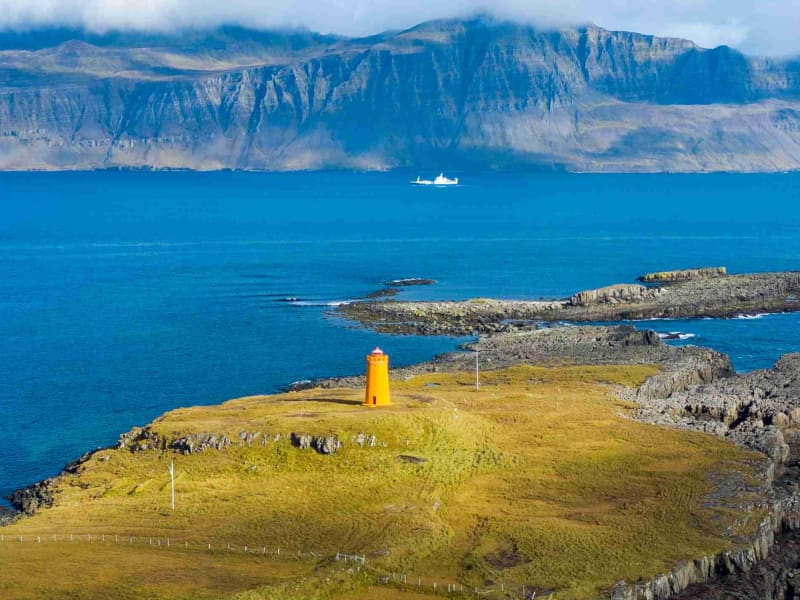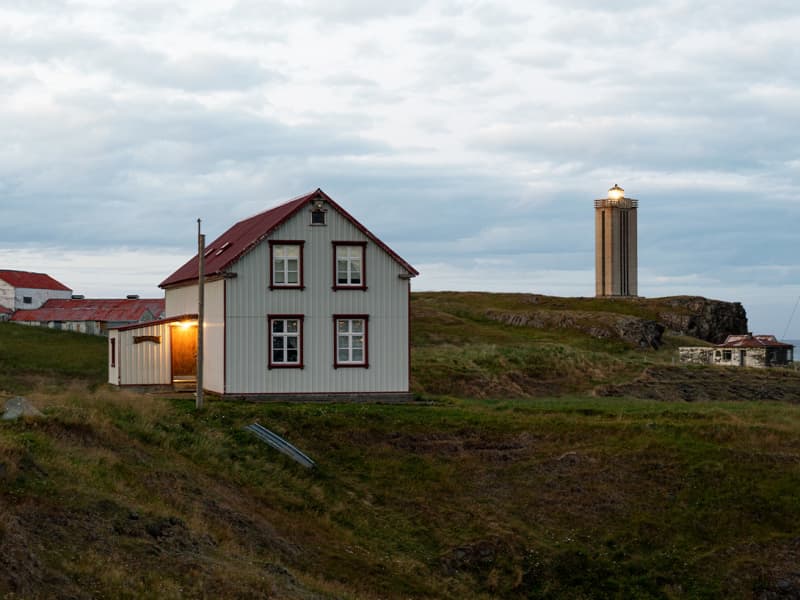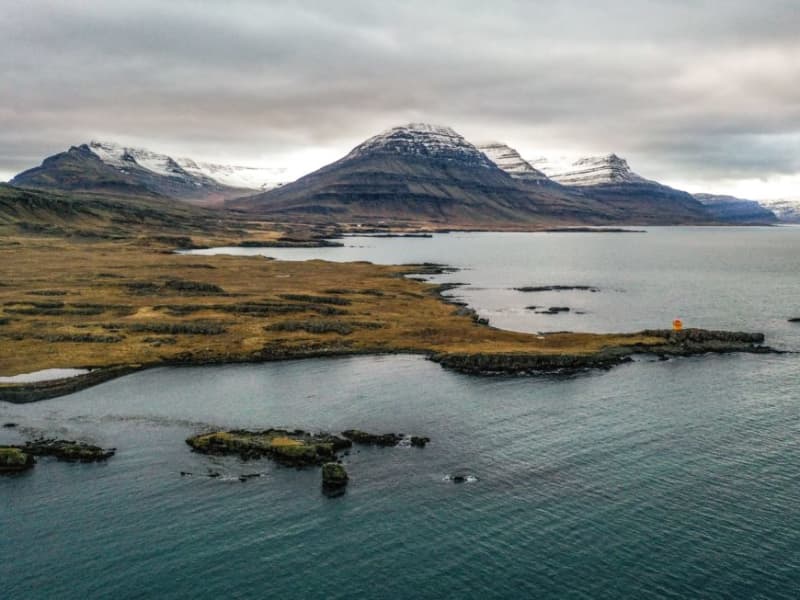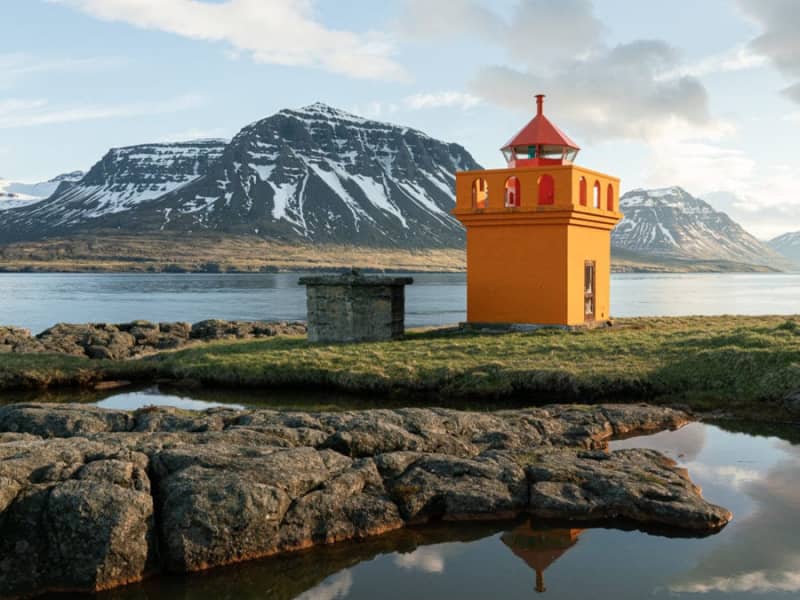Dalatangaviti
At Dalatangi, there are two lighthouses. The older one was built by the fishing operator Ottó Wathne in 1895. He paid for the lighthouse construction, which is made of basalt with stone glue in between. The Danish Lighthouse Institute then provided lighting fixtures, a kerosene lamp, and a mirror to amplify the light. Following the construction, the National Treasury took over the operation of the lighthouse. The younger lighthouse was built in 1908 and is still in use.
The road to Dalatangi lies from Mjóifjörður town. It is not possible to drive further east in Iceland. At Dalatangi, there is an excellent view to the north, to Glettingur and into Loðmundarfjörður and Seyðisfjörður.
Dalatangi has a weather station, and a regular observations have been made there since 1938.







